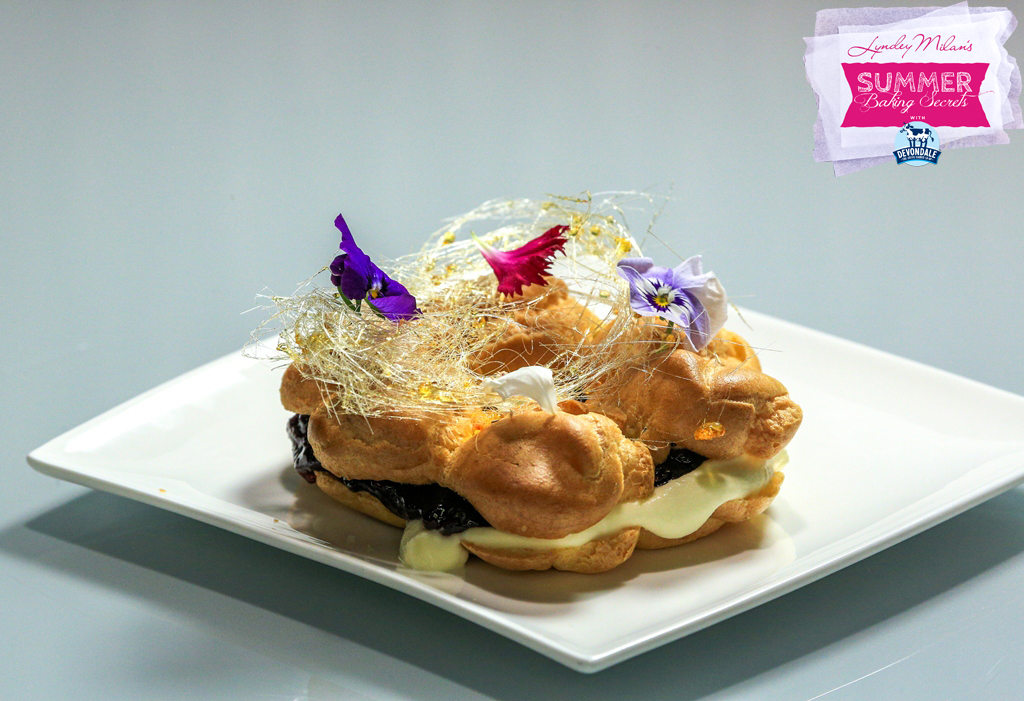
I am the choux pastry queen! How dare I say that? Well, even Stephanie Alexander used my recipe in her legendary Cook’s Companion. Choux pastry (or pâte à choux as the French call it) is so versatile for simple sweet and savoury treats from cream puffs, eclairs & gougère to more elaborate creations such as the croquembouche, religieuse or a St. Honoré cake. For my showstopping choux pastry on this episode of Summer Baking Secrets, I’ve created a Paris Brest with Triple Berry Cream, Rosewater Cream and spun sugar for the most elegant dessert ever!
My tips for perfect choux pastry begins, as so often is the case with baking, with the base. Here I diced up Devondale unsalted butter to bring to the boil with salt and water so that it would melt evenly and quickly and not allow any evaporation, keeping the proportions correct before adding the flour. Using unsalted butter then adding salt ensured I could control the sodium content in the recipe, maintaining that all important balance. I create what is called a panade by adding flour, then add in eggs one at a time until I achieve a shiny dough that falls from the spoon easily. By adding the beaten egg gradually, I ensure that I get a perfect dough that isn’t too wet. I then pipe small round balls of dough in a circles to form my Paris Brest. I drew circles on the underside of baking paper to use as a guide. Then I bake until firm and golden brown, remembering that choux pastry often looks cooked when it isn’t quite. To make sure your pastry isn’t soggy – pierce with a small knife and return to the oven to completely dry out. This will ensure the choux stays firm and won’t deflate!
For the final touches, fill with rose scented whipped cream, triple berry jam and top with spun sugar and to make it extra pretty, decorate with rose petals or edible flowers for an unforgettable dessert.
If you make this dessert, don’t forget to send me pics on Twitter or Facebook so we can share it!!
x
Lyndey
Choux Pastry
Rosewater cream
Spun sugar
Garnish
Lyndey’s Note: Higher gluten content, like bread flour gives crisper results than ordinary soft, plain flour, so if you have some on hand, it’s a good choice. Profiteroles look cooked before they are so ensure the insides are dry. Use the spun sugar as soon as possible after making it. The moisture in the air will cause the toffee strands to break down after an hour or so or more quickly on a humid day.

Keep in touch!
